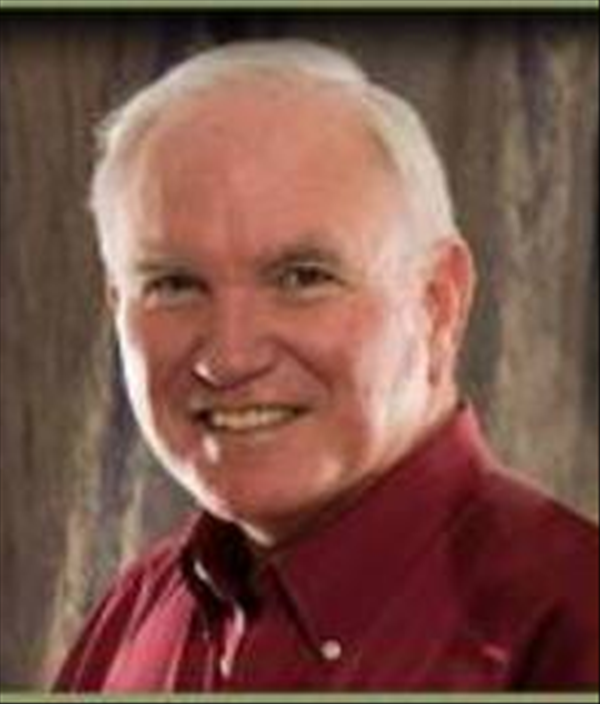How Poetry Helps Reconcile the Genesis 1 Creation Story with Science

Editor's Note: Dr. Roger Barrier went to be with the Lord on February 16th, 2024. Dr. Barrier's family is honoring his legacy by continuing the ministry of Ask Roger and preachitteachit.org for years to come as they share more than two thousand still-unpublished sermons and Ask Roger articles. All articles authored by Dr. Barrier that are published and republished are done posthumously.
Dear Roger,
Recently two of my friends raised questions about the creation story. One had been deeply hurt when another gal at her Bible study group told her that if she didn’t believe in a literal 7 days creation, she might not even be a Christian! The other, a young guy science major whose father is a scientist and atheist, was beginning to question the whole “faith-thing,” since he can’t reconcile literal 7 days with scientific method…. I don’t know if you want to address something this controversial and divisive, but … since the elephant is in the room, I think maybe we (er, that would be you, as “we” doesn’t have the answers…) should talk about it.
Love ya, Lance
Dear Lance,
Your question breaks my heart. I am grieving for your first friend. How we interpret the creation story can never be a test of our Christianity. Paul wrote in 1 Corinthians 15 that the key to Christianity is the resurrection—not how we interpret Genesis One.
I also grieve for your science friend who is unable to reconcile the “whole faith thing.” A literal seven-day creation makes little sense to one who thinks he/she can find multiple examples of scientific evidence that the universe was fashioned over billions of years; that every element heavier than lead on earth was cooked up in a star explosion somewhere else in the universe; and that the earth is about four and one-half billion years old.
Trying to reconcile scientific findings with the literal Genesis creation story misses the point.
I don’t think that Moses had in mind a literal translation of Genesis One. Sorting out cosmology was the least of his worries.
His big worry was leading a rebellious and stubborn people who were having a hard time letting go of the Egyptian gods.
The people were clamoring to return to Egypt where the food was better and the gods were well-known.
Moses used Hebrew poetry, in a culture where few knew how to read and write, to make it easy to remember that God was the creator of all and that the Egyptian gods were imaginary falsehoods.
Poetry is usually much easier to remember than prose.
Although it contains poetry, Genesis 1 is not a myth.
After all, about one-quarter of the Bible is written in poetry. Just as painters paint pictures with paint, poets paint pictures with thoughts.
We interpret prose as prose. Prose is literal. Poetry is not.
Moses was using poetry to rhyme thoughts.
The Bible writers used all sorts of literary devices to communicate truth. For example, when Jesus said, “I am the door," he was using a metaphor. Jesus is not made of wood. He is the door to salvation.
Paul used an allegory in Galatians 4:24-25 to contrast Mount Sinai (that represented the Law) with Mount Calvary (that represented grace).
The Bible is filled with similes, onomatopoeias, hyperboles, and chiasms.
No one interprets these grammatical devices as literal prose. We deal with prose as prose and poetry as poetry.
Most English poetry rhymes words. For example, “Hickory, dickory dock, the mouse ran up the clock.” Dock rhymes with clock.
Hebrew poetry doesn’t rhyme words. It rhymes thoughts. Psalm 1:1-2 is a good illustration of rhyming thoughts. Notice in the passage below how “walk, “stand,” and “sit” rhyme. Notice how “counsel,” “way,” and “seat” rhyme. Notice how “wicked, “sinners,” and “mockers” rhyme.
Blessed is the man who does not (walk) in the counsel of the wicked
or (stand) in the way of sinners or (sit in the seat) of mockers.
But his delight is in the law of the LORD,
and on his law he meditates day and night.
In the Bible we interpret poetry as poetry. For example, in Psalm 91:1-4, the Psalmist declares: “He who dwells in the shelter of the Most High will rest in the shadow of the Almighty. He will cover you with his feathers, and under his wings you will find refuge…”
No one interprets this as literal. God does not have wings and feathers. This is a poet’s way of picturing God’s love and care: like a mother hen gathers her chicks under her wings when threatened him, so God protects and cares for His children.
Matthew tells us that Jesus entered Jerusalem on Palm Sunday riding on both a donkey and a colt (Matthew 21:1-5) Can you imagine Him seated on two animals? Of course not! Matthew used Hebrew poetry to celebrate this glorious event. His comment is a direct quote from a Messianic prophecy recorded in poetry in Zechariah 9:9 about the entering of Jesus into Jerusalem on Palm Sunday.
Now that we know a little more about Hebrew poetry, let’s consider Genesis 1.
Let's look at the Genesis 1 creation story from a poetical point of view.
In Genesis 1:1-2 Moses declared that God was the creator of all things and that the earth was formless and had no structure. The earth also was empty.
Utilizing Hebrew poetry, Moses declared that God took the formless earth and gave it form. He then took the empty earth and filled it.
The structural form was put in place on days one through three.
On day one, God created Light and Darkness (Genesis 1:3-5).
On day two, God separated the Sky and Waters (Genesis 1:6-8).
On day three, God created dry Land and Vegetation (Genesis 1:9-13). The earth was now formed and it was time to fill it.
On day four, God created the Sun, Moon, and Stars to fill the light and darkness (Genesis 1:10-19).
On day five, God created Birds and Fish to fill the sky and Waters (Genesis 1:20-24).
On day six, God created Animals and Man to fill the dry land and vegetation. (Genesis 1:25-26).
On each of the six days of creation, Moses knocked down one or more of the Egyptian gods: light and darkness; sea and sky; land and vegetation; sun, moon and stars, birds and fish; and animals and man. Even Pharaoh and his son were gods. Moses declared that these Egyptian gods were not gods at all. They all were creations of the one God who stands tall above all!
By the way, on day seven, God rested (Genesis 2:2-3). This does not come through in English, but in Hebrew poetry, rest rhymes with create.
The Babylonians had a 10-day week based on three cycles per month. Other cultures had varying lengths. God established a seven-day week with one day of rest for our best benefit.
Many interpretations are put forth to explain the complexities of the opening verses of Genesis.
The “young-earth theory” assumes that the earth is really 6,000 years old but that God created the earth and universe in six days to look as if it were billions of years old. This is also called the mature-earth creation.
Others focus on the Hebrew word “yom” for an explanation. But the word “yom” does not always mean 24 hours. It also means, “age”, like, “back in grandpa’s day” they used to drive “Model T” cars. As a result, some try to understand the biblical creation story in terms of long million (billion) year ages.
Struggles are fought between those who espouse Theistic Evolution versus Naturalistic Evolution.
Both groups agree that evolution is the means for the continuing process of creation. The theistic evolutionist believes that God is the One behind the design and process while the Naturalistic Evolutionist believes that evolution began by chance and is proceeding by chance.
Lance, I want you to know that I struggled for 25 years over reconciling the Genesis 1 creation account with obvious scientific discoveries. Fortunately, I was given the book, The Meaning of Creation: Genesis and Modern Science, by Conrad Hyers. He is the one who presented the ideas of Moses using Hebrew poetry to explain the viability of reconciling both the literal Genesis 1 account with Hebrew poetry.
Genesis 1 is a religious book dealing with the issue of worshipping Egyptian gods other than “Elohim.” Science is all about uncovering the marvels of how God built—and continues to empower—His creation.
Love, Roger
Photo Credit: ©Getty Images/RyanTangPhoto

This Ask Roger article may feature insights from Roger's wife, Dr. Julie Barrier, co-founder of Preach It, Teach It, worship minister, concert artist, and adjunct professor at Golden Gate Baptist Theological Seminary, or his daughter, Brie Barrier Wetherbee, a sought-after Bible teacher and conference speaker, author, analyst, and Christian theologian.
Originally published October 27, 2020.





